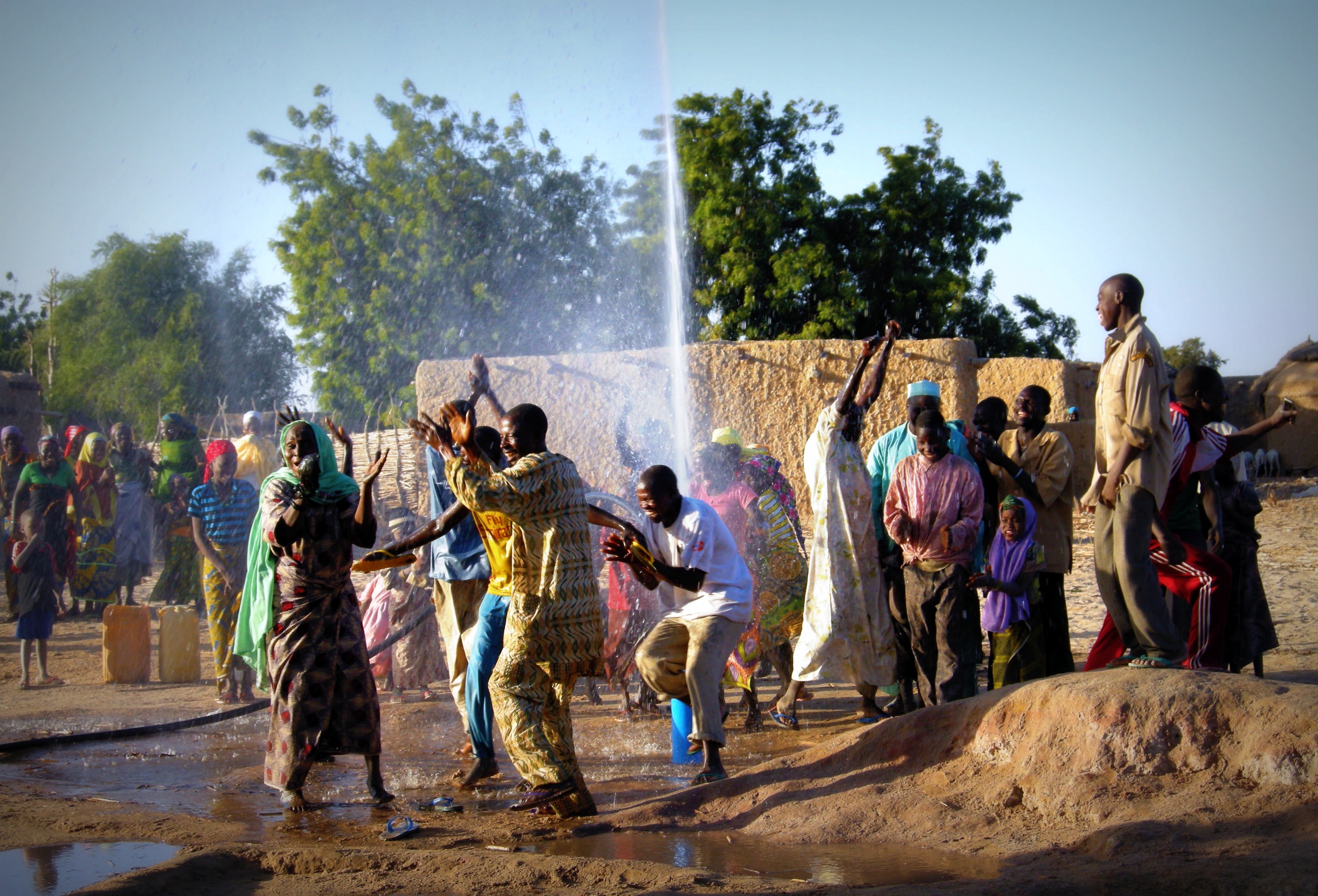by Barbara Goldberg
 |
| {celebration following the drilling of a well} |
The media, including the New York Times in a June 17th article, has picked up on a very comprehensive report mapping groundwater resources in Africa. Based on two years of study led by the British Geological Survey, this is the first quantitative continent-wide mapping of aquifer storage and potential borehole well yields from an extensive review of available maps, publications and data. (An aquifer is defined as water-bearing porous soil or rock strata that yield significant amounts of water to wells.) Maps have been generated pinpointing the locations of aquifers by country and region.
A key conclusion: For a continent where more than 300 million people lack access to safe drinking water, Africa is sitting on a lot of it. The researchers estimate that Africa's groundwater totals about 0.66 million cubic kilometers, which means the continent has over 100 times more water underground than on the surface.
However, groundwater resources are unevenly distributed: the largest groundwater volumes are found in the large sedimentary aquifers in the North African countries Libya, Algeria, Egypt and Sudan. The good news for Wells Bring Hope: Niger, the country where we drill, ranks seventh highest in available groundwater resources out of 49 African countries.
That plentiful supply has contributed to the high success rate we have had in our main drilling area of Niger, Maradi, last year. We’re proud to report that last year 100% of all attempted wells were successful, all wet wells. This is also due to the high level of professionalism of our partner, World Vision’s drilling team. We are grateful to be working in an area where aquifers are plentiful, where our efforts to provide safe water to the most rural areas of Niger have been productive.

